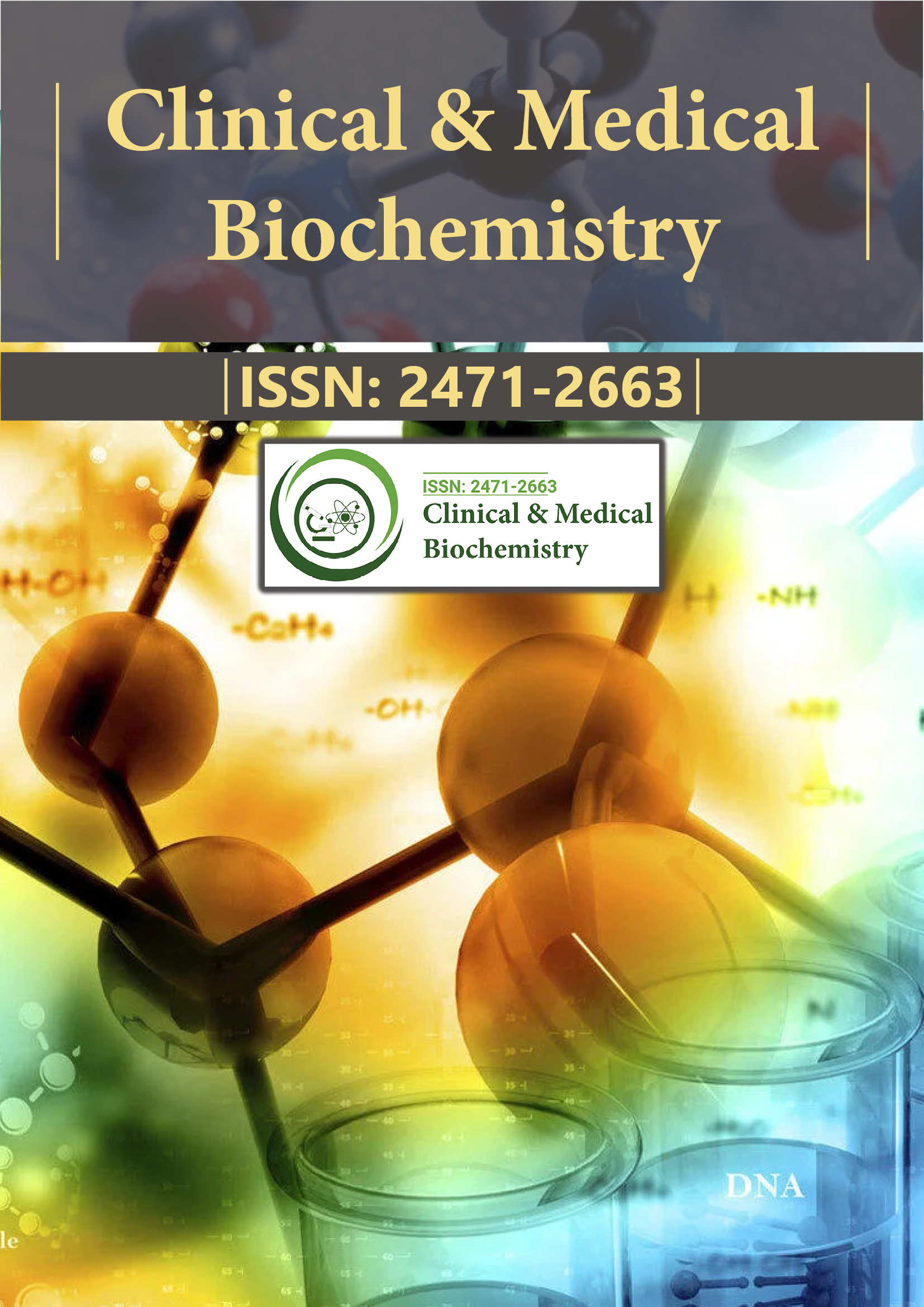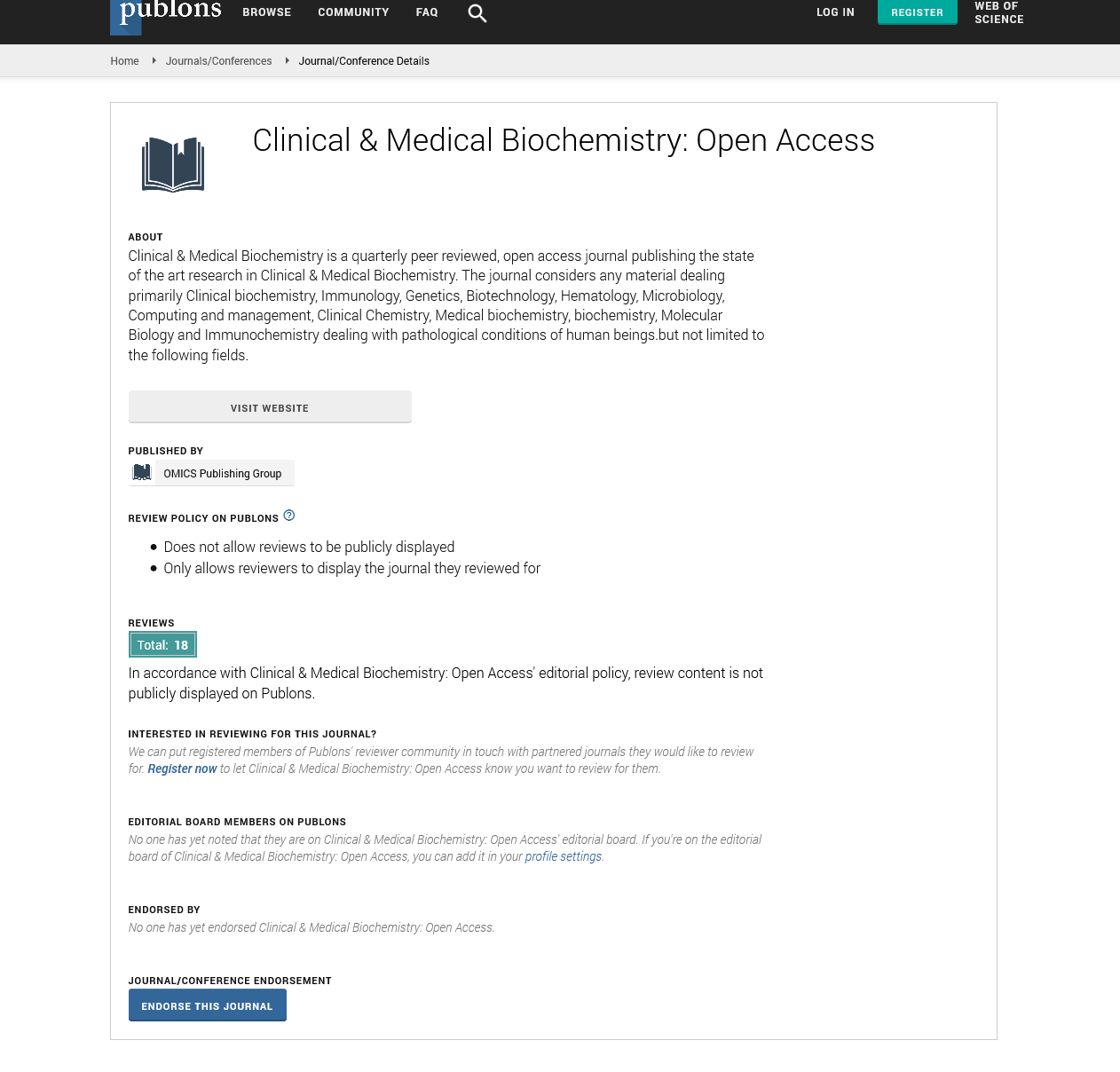Indexed In
- RefSeek
- Directory of Research Journal Indexing (DRJI)
- Hamdard University
- EBSCO A-Z
- OCLC- WorldCat
- Scholarsteer
- Publons
- Euro Pub
- Google Scholar
Useful Links
Share This Page
Journal Flyer

Open Access Journals
- Agri and Aquaculture
- Biochemistry
- Bioinformatics & Systems Biology
- Business & Management
- Chemistry
- Clinical Sciences
- Engineering
- Food & Nutrition
- General Science
- Genetics & Molecular Biology
- Immunology & Microbiology
- Medical Sciences
- Neuroscience & Psychology
- Nursing & Health Care
- Pharmaceutical Sciences
Commentary - (2022) Volume 8, Issue 3
Generation of cDNA Libraries Using Highly Sensitive Low Quantities Cloning Method
Milan Bartos*Received: 01-Apr-2022, Manuscript No. CMBO-22-16657; Editor assigned: 06-Apr-2022, Pre QC No. CMBO-22-16657 (PQ); Reviewed: 27-Apr-2022, QC No. CMBO-22-16657; Revised: 04-May-2022, Manuscript No. CMBO-22-16657 (R) ; Published: 11-May-2022, DOI: 10.35841/2471-2663.22.8.125
Description
Preparation of cDNA libraries from small RNA samples and high-throughput sequencing are powerful tools for quantifying known small RNAs (such as microRNAs) and discovering new RNA species. Interest in identifying small RNA repertoires present in tissues and fluids has grown significantly with the findings that small RNAs can serve as indicators of biological and pathological conditions.
MicroRNAs (miRNAs) are small regulatory RNAs that are present in all animal cells and regulate messenger RNA (mRNA), which encodes proteins after transcription. miRNAs are not only expressed in cells, but can also be detected in stable complexes that circulate in human body fluids. Circulating miRNAs have since been identified in serum/plasma, cerebrospinal fluid, saliva, and urine, and the profile of expressed miRNAs has been shown to alter in disease states. As such, miRNAs offer stimulating potential for use as non-invasive biomarkers for disease diagnosis and/or disease progression and treatment monitoring.
Current methods for identifying and quantifying circulating miRNAs include microarray and Real-Time quantitative Polymerase Chain Reaction (qRT-PCR) hybridization techniques, as well as deep sequencing of known and novel miRNAs from small RNA-derived cDNA libraries. Importantly, unlike hybridization-based approaches, deep sequencing is not limited by assay content and allows single nucleotide resolution of RNA species, with unannotated novel miRNAs and known isomiRNA (isoMirs).
The Conventional approaches to preparing cDNA libraries from small RNAs (sRNAs) relies on T4RNA ligase-dependent ligation of adapter oligonucleotides to the 3'and 5' termini of isolated RNA. These ligation products are reverse transcribed and PCR amplified to generate a cDNA library suitable for highthroughput sequencing. The limitation of existing approaches is from hundreds of picograms (pg) to micrograms (μg) of input RNA to proactively account for losses during various enzymatic reactions and in multiple gel purification steps. Recent innovations include the use of a single RNA adapter ligation, followed by Reverse Transcription (RT) and cDNA circularization. However, these approaches require micrograms of starting material. Commercially available kits for creating cDNA libraries are optimized for input RNA in the microgram range, are very expensive for multiple sample applications, and offer little latitude for customization.
Recent studies identifying small RNA as a disease biomarker highlight the potential application of cDNA cloning and deep sequencing in clinical settings. However, Low Quantities (LQ) of material found in bio-fluids and other clinically relevant samples pose significant challenges in preparing cDNA libraries. Recent advances in LQ cDNA cloning include the preparation of miRNA cDNA libraries from 5 ng of total RNA extracted from humans blood plasma. The single-cell RNA-seq method describes the surveying messenger RNA, but not small noncoding RNAs. Therefore, for such applications where sequences are unknown, sample is scarce and especially where quantities of input RNA are in the sub-ng and pg range, novel methods are required for the efficient cloning of cDNA libraries from miRNAs and other small noncoding RNAs.
Deep sequencing of small RNA-cDNA libraries from biological samples reveals and quantifies RNA transcripts, including miRNAs and other small non-coding RNAs associated with various developmental, physiological, or pathological states. It becomes possible to change. Ideally, it is desirable to resolve the transcription profile at the single cell level or with a small sample of experimental material such as tissue biopsies or bio-fluids. The single-cell RNA-seq method was developed for mRNA cloning, but not yet for small non-coding RNAs. Preparation of cDNA libraries using samples of small RNA isolated from human plasma has been reported with RNA yields in the nanogram range. However, the quantity of RNA available from clinical samples, especially bio-fluids, is often far less than nanograms, even in the sub-picogram range.
Citation: Bartos M (2022) Generation of cDNA Libraries Using Highly Sensitive Low Quantities Cloning Method. Clin Med Bio Chem. 8:125.
Copyright: © 2022 Bartos M. This is an open-access article distributed under the terms of the Creative Commons Attribution License, which permits unrestricted use, distribution, and reproduction in any medium, provided the original author and source are credited.

